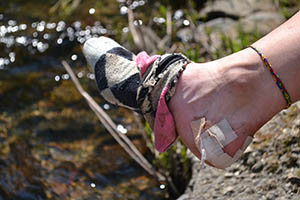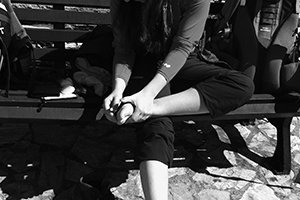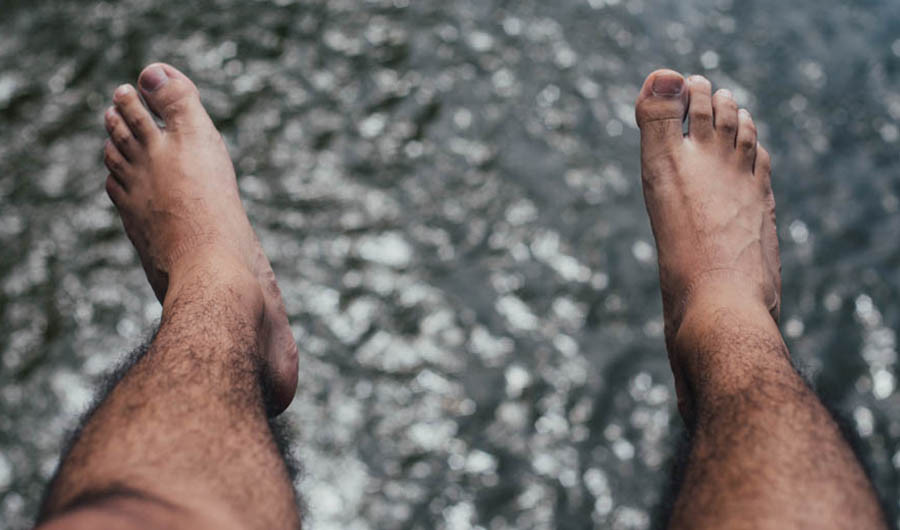 Blisters are by far the most common physical setback encountered by pilgrims along the Camino. What begins as a slight irritant can become a very annoying and painful issue over time. Caused by the constant rubbing together of skin and socks, blisters usually appear during the first few days of walking. There are many tips to avoid blisters, but these are of dubious effectiveness. However, the most important factors to consider are the quality of your footwear, the degree to which you have already walked with this footwear, and the quality of your socks (seamless socks without synthetic components are best).
Blisters are by far the most common physical setback encountered by pilgrims along the Camino. What begins as a slight irritant can become a very annoying and painful issue over time. Caused by the constant rubbing together of skin and socks, blisters usually appear during the first few days of walking. There are many tips to avoid blisters, but these are of dubious effectiveness. However, the most important factors to consider are the quality of your footwear, the degree to which you have already walked with this footwear, and the quality of your socks (seamless socks without synthetic components are best).
Once along the Camino, it is worth taking the following precautions: Always walk with dry shoes and socks; put some sort of dressing on the areas of greatest friction (before blisters appear); and apply Vaseline on your feet before starting the day’s stage.
If a blister appears, which is very likely, you should perforate it with a sterile hypodermic needle, drain it completely and straightaway apply an antiseptic to avoid infection. Afterwards, you must keep your feet clean and dry for as long as posible. The next day, before starting the stage, cover the blister with a sterile dressing, and check it every time you stop along the way. The blister’s dead skin must not be peeled off until the skin has regenerated fully.
 Tendinitis:
Tendinitis:
Intense and persistent muscle aches can sometimes be mistaken for tendinitis. Tendinitis is actually the inflammation of tendons and can be a major problem. If in doubt, one should go to a medical centre where a doctor will make a diagnosis and prescribe an appropriate treatment. The main causes of tendinitis are overloading one’s backpack, walking with a limp due to blisters, a lack of fitness and dehydration caused by extreme heat and not drinking enough fluids. To help prevent tendinitis, your body and joints have to be well hydrated, so drink plenty of water, especially on those hot days, even if you’re not thirsty.
Dehydration:
In more extreme cases, dehydration can cause heat stroke, which can have serious consequences. To avoid dehydration, you should avoid walking during the hottest hours, protect yourself from the sun with a hat or cap and drink water frequently, even when you’re not thirsty.
Sunburn:
Use sunscreens with a high protection factor and one that is suitable for your skin type.




Comments